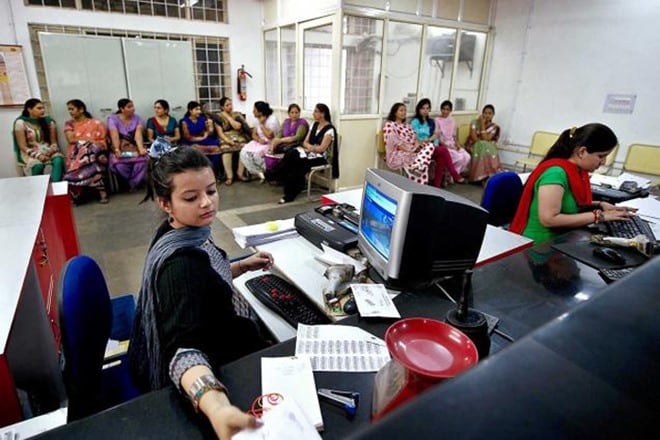There has been low representation of women at workplaces in India. It is a global predicament but it is far more prevalent in India. The “Global Gender Gap Report” (2017) released by the World Economic Forum (WEF) presented a gloomy picture in terms for gender equality at workplaces in India. The country ranked a low 108 out of 144 countries on the gender equality scale, slipping from 87 in 2016.
According to a report by McKinsey & Company on advancing of women’s equality in the Asia-Pacific region, women make up for only 25% of the total workforce in India.
The report pointed out that a mere 10% increase in women workforce in India could add $770 billion to the country’s Gross Domestic Product in the next seven years.
While there have been challenges in this regard, corporate in India are now actively looking to make their workplaces more inclusive for women. Inclusiveness and diversity are now key factors when it comes to hiring. And it is not limited to just hiring, HR policies are being devised to make women more comfortable and safe at workplaces.
AVTAR I-WIN and Working Mother, have released a list of top 100 best companies for women in India. It list some of the top companies in India which have committed to the cause of gender inclusion and diversity. Companies that have made it to the top 10 are Accenture, ADP Pvt Ltd., Barclays, Deloitte, EY, IBM, Shell India, TCS, Tech Mahindra and Verizon Data Services. (in alphabetical order)

In an interview with Financial Express Online, Dr. Saundarya Rajesh, Founder-President of AVTAR Group, said, “the idea behind the list was to enable organizations to assess how they are faring with respect to being a diverse and inclusive (D&I) workplace. One of India’s first D&I audits was done way back in 2008.”
When asked about what is it that makes a company best workplace for a woman, just having more women peer or there are other factors too, Dr. Saundarya said, “There is diversity and then there is inclusion, these are two different parts. The second, inclusion, comes before the first that is diversity. Inclusion drives diversity. When an organization believes in the value of inclusion – leave gender aside – just as a pure corporate value – then it becomes a great starting point for emerging as a best employer for women.”
“Inclusion is the creation of a workplace where everyone’s points of view is valued. Where conflict is managed in a positive and empowering manner, there inclusion is alive! So, once the culture of inclusion is created, then the plans of diversity – hiring of women, hiring of cognitively diverse individuals, ensuring their retention, setting in place policies and programs – all of this will yield fruit,” she added.
On the issue of gender inclusion and its condition, as prevalent across the country especially in the heartland, she told Financial Express Digital that women employed by micro, small and entrepreneur-run businesses, spread across Tier I, Tier II and Tier III cities and towns of India face several barriers.
“Patriarchal ideas around the economic and social repercussions of women’s advancement via pursuing a job are gigantic challenges. Gender inequality in the workplace delivers a body blow to women’s workforce participation and has a crippling effect on the employment of women. Even as small business owners and entrepreneurs find the employment of women – both in factories and offices – to be very effective and productive (due to lack of alcoholism, non-unionization etc), they have to deal with the fact that the woman will take breaks for childbearing and childbearing,” she said.
On the topic of maternity leaves, Dr. Saundarya said that the six-month maternity leave ends up adding yet another obstructions faced by the woman employed in the informal sector. “Her employer – typically a small business owner who runs a tight ship on razor-thin margins and stiff competition, is looking for ways in which he can get more out of his wage bill. To him, the burden of a six-month maternity leave, combined with paying for a replacement at that time is simply the last nail in the coffin,” she said.
“This is not a problem that India faces alone. Several countries have implemented the maternity leave policy only to find that business owners have to be incentivised by subsidies or tax rebates to motivate greater employment of women,” she added.
Speaking to Financial Express Online about the the oft-quoted research study by McKinsey, which pointed out the enormous gain of additional annual GDP that India can get by bridging the gender gap, she said, “This speaks of women contributing to the economy by both agricultural and non-agricultural pursuits. If the government can put in place a mechanism whereby women employed by formal and informal sectors feel welcome in their workplaces, by employers who obtain a financial incentive for investing in their post-maternity well-being, we will truly progress towards equitable development.”


